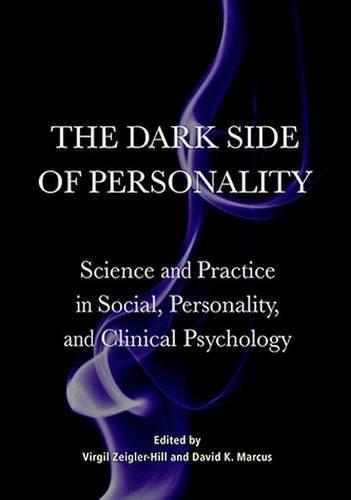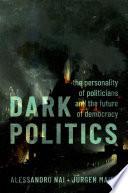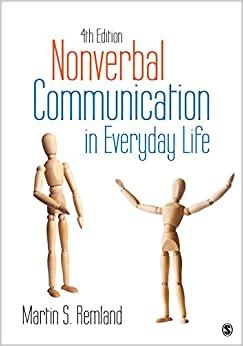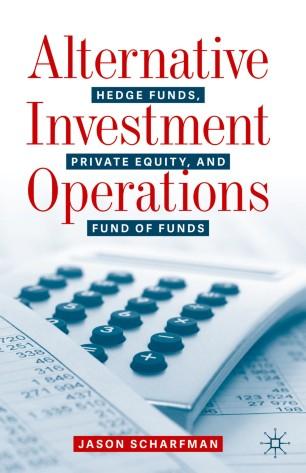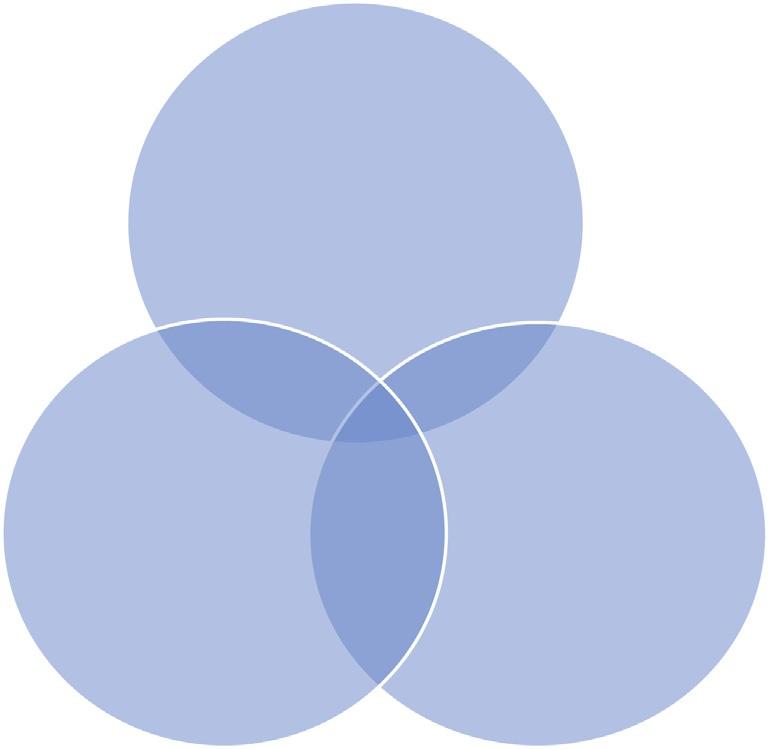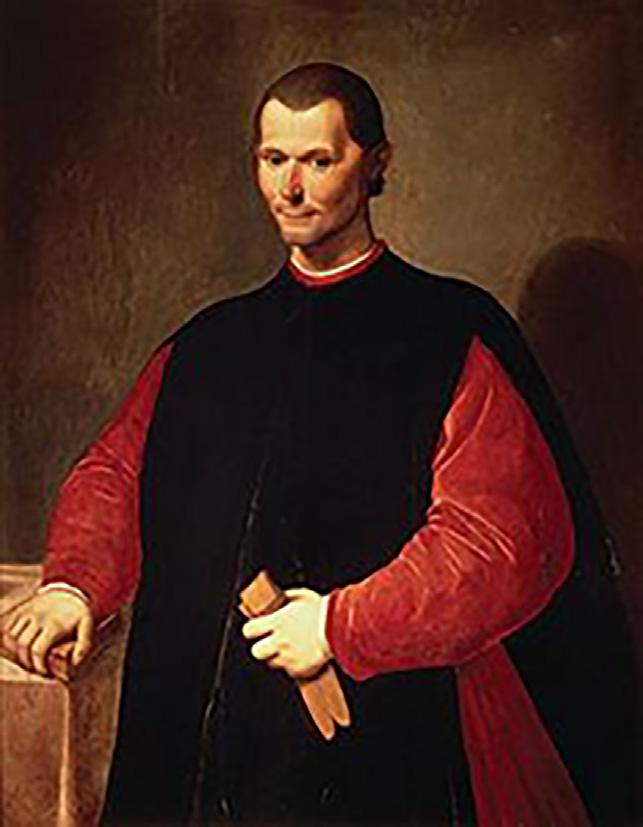IntroductiontotheDarkTriad
ChapterOutline
Jack/Jodieisaplayer.S/helikestogamblewithmoney,andjugglemultiple romanticrelationshipsatthesametimewithseveralwo/men.S/hehasacynical viewoftheworld,andotherpeopleinit.Jack/Jodiefeelsthatitisbesttotake advantageofothersbeforetheytrytotakeadvantageofyou.Jack/Jodiethinks thats/heisgreatateverythingthats/hedoes,anddeservesbestthingsinlife. S/hehasverylittleempathyforothers,andtreatspeopleastoolsforachieving hisgoals.Jack/Jodieiseasilyinsulted,andlongsforrevengewhenthingsdon’t gohis/herway.
JackandJodiearefictionalcharacters,buttheycouldeasilyexistinreallife. Characterslikethemhavequalitiesthattypifyfeaturesofmalignantpersonalitytraits,alsoknownastheDarkTriadofpersonality.Inthepastfew decades,thesociallyaversiveDarkTriadofpersonalityhascapturedthe attentionofbothresearchersandthegeneralpublicalike.SincetheconceptionoftheconstructbyPaulhusandWilliamsin2002,ithasbeenstudied intensivelyinthousandsofacademicpublications.Withoutadoubt,we haveafascinationforpeoplewhoareantagonistic,selfish,andexploitative, totheextentthatthesepeopleareoftenportrayedwithadmirationinthe popularculture( Jonason,Webster,Schmitt,Li,&Crysel,2012).Thisbook isthefirstattempttobringtogetherthewealthofresearchonthetopic,evaluatingthesignificanceoftheDarkTriadineverydayliferangingfrom romanticrelationshiptoworkplacebehavior.
TheDarkTriadconsistsofthreeoverlapping,yetdistinctivepersonality traits:Machiavellianism,narcissism,andpsychopathy.Thetraitsshareacore ofmanipulation,callousness,andselfishness( Jones&Figueredo,2013).All ofthethreetraitsarecharacterizedbyadisregardofsocialnorms,which oftenleadstosocialtransgressionsintermsoflying,cheating,manipulating, andstealing.Individualswhoarehighinthedarktraitsareuntrustworthy anduncaringromanticpartners,backstabbingworkcolleagues,andcold andcontrollingasparents.Inshort,theDarkTriadcanhavetoxicconsequencesforotherswhoareintheradarofthosehighinthesetraits.However,DarkTriadtraitsdohavepositivesidestoo.Especiallyincircumstances wherethereisapossibilitytogainsomethingforoneself,individualswith DarkTriadtraitscanbeloyalfriends,effectiveleaders,andheroicrescuers (e.g., Hart,Richardson,&Tortoriello,2018; Patton,Smith,&Lilienfeld, 2018; Smith,Hill,Wallace,Recendes,&Judge,2018).
Aswellasthetoxiccore,thethreetraitshavesomeuniquecharacteristics.Machiavellianismisdistinctiveintheflexible,chameleon-likeuseof strategiesfromdefectiontocooperationtosuitthedemandsofthesituation, withtheultimateaimofgainingbenefitsfortheself.Interestingly,astudyon asampleofPolishparticipantsfoundthatoutofthethreetraits,Machiavellianismwasasignificantpositivepredictoroffluidintelligence(Kowalski etal.,2018).Inessence,individualhighinMachiavellianismareskillful politicalmaneuvers,withaneyeforopportunitiestoexploitinorderto achievepersonalgain.Thefeaturesofpsychopathyincludeimpulsivity, recklessrisk-taking,andveryshallowempathytowardotherpeople.Those highinpsychopathymaybelessflexibleandmoreopportunisticintheir behaviorsthanhighMachiavellianindividuals.Narcissism,inturn,is
characterizedbyvanityandgrandiosity,andbyaninflatedself-assessment. Individualshighinnarcissismbelievethattheyhavesuperiorabilitiesin comparisontootherpeople,butthesebeliefsarerarelygroundedinreality. AlltheDarkTriadtraitsrelatetodysfunctionalinterpersonalrelationships, stemmingfromselfishbehaviorandlackofcareforothers.Inthisbook,I willdiscusstheresearchontheDarkTriadtraitsinromanticrelationships in Chapter4 andevaluatedarktraitsamongfriendsandfriendshipnetworks in Chapter5.Unfortunately,theinfluenceoftheDarkTriadwithinfamilies islessstudied,especiallyintermsoftheimpactofhavingaparentwithatoxic personality.Thereforeparentingandfamiliesareonlybrieflyconsidered laterinthischapter,aspartofthediscussionoftheorigins(i.e.,etiology) oftheDarkTriad.
Inthepersonalitydisorderliterature,especiallypsychopathyandnarcissismareoftenresearchedin“clinical”samples.Participantsinthesestudies areindividualswhoareunderthesupervisionofclinicalorforensicfacilities, andhavereceivedapersonalitydisorderdiagnosis.Incontrast,researchon “subclinical”or“nonclinical”populationsconsistsofpeopleinthecommunity,oftenusingstudentsordiverseinternetsamples.Inthesesamples,the DarkTriadisinvestigatedasacontinuum,withoutmakingadistinction between“normal”and“abnormal.”In Chapter2,IwillprovideanoverviewoftheDarkTriadwithintheclinicalframework,andin Chapter3, forensicimplicationswillbediscussed.
Inmostpersonalityresearch,thecontinuousdistributionofthescoreson theDarkTriadquestionnairesiscorrelatedwiththecontinuousdistribution ofothervariablesofinterest.Sofar,theDarkTriadhasbeenexploredwidely inthousandsofstudiesinrelationtoalargenumberofintra-andinterpersonalvariables,includingcrime,bullying,risk-taking,deception,ahostof matingbehaviors,morality,racism,empathy,gossip,interoceptiveawareness,chronotypes,andsocialcognition.Thelistgoesonforever.Inthis book,Iwillgivespecialconsiderationtoworkplacebehaviors (Chapter6),aswellastoarapidlyburgeoningfieldofresearch,theDark Triadinthecyberworld(Chapter7).
Theterminologyusedinclinicalpsychology/psychiatryisdifferentto thatutilizedinpersonalitypsychologyresearch.Becauseclinicalresearch oftenutilizesdiagnosticcategories,individualsarereferredtoas“narcissists” or“psychopaths.”Thisterminologyimpliesthattherearedistinctivelydifferentcategoriesofpeopleandreliesonarbitrarythresholdsfordrawinga linebetween“normal”and“abnormal.”Inpersonalityliterature,these kindsoftermsarenormallyavoided,andpeoplearereferredtoasbeing
“narcissistic”or“psychopathic,”orevenmorecommonly,being“highor low”inatraitnarcissismandpsychopathy.Throughoutthisbook,Iwill attempttousetheterminologyassociatedwithpersonalityliteraturerather thanwithdiagnosticcategories.
AlthoughalltheDarkTriadtraitshavebeenconceptualizedasdispositional,stablefeaturesinanindividual,thereissomeevidencethatespecially fornarcissism,situationsmayplayapartinthemanifestationofthetrait.For instance,levelsofnarcissismcanbeexperimentallymanipulatedtosome extent.Narcissismcanbeincreasedbyaskingparticipantstothinkabout theirownachievements(Sakellaropoulo&Baldwin,2007),orevenby thinkingofoneselfasbeingaprinceoraprincess(Lietal.,2016).Inadiary study, GiacominandJordan(2016) lookedatfluctuationsinnarcissismon dailybasis.Theyfoundthatfeelingstressedreducedlevelsofnarcissismand havingpoweroverothers/doingsomethingpositivetootherpeople increasednarcissism.Thisfindingsissimilartothatof Piff(2014),whodiscoveredthatalthoughwealthierindividualsweremorenarcissistic,their narcissismscoreswereloweredwhentheywereprimedtothinkabout thebenefitsofegalitarianism(i.e.,theideathatallpeopleareequaltoothers). Thusalthoughtherearebaselinelevelsofnarcissismthatdifferbetweenindividuals,narcissismcanalsobeconsideredasatemporarystatewhichfluctuatesindifferentcircumstances.ThestabilityofMachiavellianismand psychopathyislessstudied,andalthoughweknowthatthequestionnaire scoresonthesetraitsdeclinewithage,thefindingsarebasedoncrosssectional,ratherthanlongitudinalstudies.Tomyknowledge,thereisno publishedresearchreportingexperimentsmanipulatinglevelsofMachiavellianismandpsychopathy.
Therehasbeensomedebateanddiscussionoftheexactnatureandrelationshipbetweenthethreetraits.Researchershaveproposedthatnarcissism isdistinctfromtheothertwo,andMachiavellianismandpsychopathy shouldforma“DarkDyad”(Egan,Chan,&Shorter,2014; Rogoza& Cieciuch,2018; Vize,Lynam,Collison,Miller,2018).Indeed,ametaanalysisof91researchpapersshowedthatpsychopathyandMachiavellianismweremorehighlycorrelatedwitheachotherthaneitheroneiswith narcissism(Muris,Merckelbach,Otgaar,&Meijer,2017),andthatMachiavellianismscalesshouldbeconsideredasalternativemeasuresforpsychopathy(Vize,Lynam,etal.,2018).Finally, Bertl,Pietschnig,Tran,Stieger,and Voracek(2017) analyzedthefactorialstructureofpopularDarkTriadmeasuresinacommunitysampleofover2000participants,andconcludedthat theDarkTriadisbestunderstoodasasingletrait,ratherthanthreeseparate
traits.However,anabundanceofstudieshavefoundthatthethreetraitsdo correlatedifferentlywithseveralpsychosocialvariables,anditisusefulto studyallthethreetraitstogether.
Fig.1.1 demonstratestherelationshipbetweenthethreeDarkTriad traits.Thedarkercoloredareasinthemiddleshowtheproportionofvariancesharedbetweenallthreetraitsandbetweentheindividualtraits.The smallsectioninthemiddle,whereallthethreecirclesmeet,showstheproportionofsharedvariancebetweenthetraits.PsychopathyandMachiavellianismsharemorefeatureswitheachotherthaneitherdoeswithnarcissism. ThelowestcorrelationsarefoundbetweenMachiavellianismandnarcissism (Furnham,Richards,&Paulhus,2013).
Aswillbediscussedinthefollowingsections,allofthethreetraitshave differentcorrelateswithbehaviors.RatherthanconstructingasinglemeasureofDarkTriad,itisusefultoanalyzethetraitsseparatelywhenconductingresearch.Previousresearchhasusedcross-correlationswiththe DarkTriadandthebehaviorsofinterest,followedbyregressionanalyses wherethesharedvariancebetweentheDarkTriadtraitsiscontrolledfor byenteringthemassimultaneouspredictorvariables.Thisallowsthe researchertoinvestigatewhattheuniquecontributionofeachtraitisto thebehaviorunderinvestigation(however,see Vize,Collison,Miller, Lynam,2018 foracautionarytale).
Despitethousandsofpublicationsoverthepastfewdecades,thereare somenotableshortcomingsintheresearch,outlinedin Table1.1.Overall,
Fig.1.1 AdiagramoutliningtherelationshipbetweentheDarkTriadvariables.
Narcissim
Machiavellianism
Psychopathy
Table1.1 ShortcomingsandSuggestionsforDarkTriadResearch
CriticismExplanationProblemSolution
Sample characteristics
Moststudiesareconductedusing WEIRDsamples(Henrich,Heine, &Norenzayan,2010)
Relianceon cross-sectional questionnairedesign Bulkoftheresearchutilizes cross-sectional,correlational questionnairedesigns
LackofreplicationResearchersfocusonnewideas ratherthanaimingtoreplicate existingresearch
Posthocinvention ofhypotheses/ p-hacking
Neglecting multidimensional natureoftheDark Triad
Conflatingmeasures withconstructs/ “jinglefallacy”
Researcherstrawlthroughtheir datatofindsignificantfindingsand formulatetheirhypothesesaround thesefindings
TheDarkTriadiscollapsedinto onecompositescore/individual DarkTriadtraitsarestudiedasonedimensionalconstructs
Relianceonthevalidityofthe questionnairemeasuresastrue representationofthetraits/Trusting twomeasurestoassessthesame construct
Lackofknowledgeonhow universal/situationspecificDark Triadandassociatedbehaviorsare
Difficultyinestablishingcausality, lackofexperimentalcontrol,or ecologicalvalidity
Arethefindingsreal,orjusta randomartifactorsomething else?
Nonsignificantrelationshipsare oftenunreported
Conductstudiesonpeoplefromall socioeconomicbackgrounds (includingverypoorandveryrich), inbothWesternandothercultures
Expandmethodologytoinclude moreexperiments,observations,and interviewstudies
Systematicreplicationofexisting researchfromteamsthatwerenot previouslyinvolvedintheresearch
Preregistrationofstudiesand hypotheses
HeterogeneitywithintheDark Triadtraitsisignored
Thequestionnairesmaynotbe valid/maskthemultidimensional aspectsofthetraits
Uselongermeasuresthatallow investigatingmultidimensional natureoftheDarkTriad
Prioritizeusingthe“goldstandard” measures/usemultiplemeasuresto studythetraits
Analyticalstrategies partiallingout sharedvariance betweenthetraits
Usinganalysessuchasmultiple regressionintakinginto considerationtheinfluenceofeach traitontheoutcomevariableafter thesharedvariancebetweenthe traitsiscontrolledforstatistically
UnsurewhattheDarkTriadtrait representsafterthesharedvariance betweenthetwoothertraitshas beencontrolled(e.g., Machiavellianismisnolongerthe sametraititwaspriortostatistically controllingforpsychopathy)
Usingzero-orderanalytical strategies(e.g.,correlatingeachDark Triadtraitindividualwithan outcomevariable,andcomparing thestrengthofthecorrelations).
Asendorpf,J.B.,Conner,M.,DeFruyt,F.,DeHouwer,J.,Denissen,J.J.,Fiedler,K., … &Perugini,M.(2013).Recommendationsforincreasingreplicabilityin psychology. EuropeanJournalofPersonality, 27,108–119. Henrich,J.,Heine,S.J.,&Norenzayan,A.(2010).Theweirdestpeopleintheworld? BehavioralandBrainSciences, 33,61–83. Vize,C.E.,Collison,K.L.,Miller,J.D.,&Lynam,D.R.(2018).Examiningtheeffectsofcontrollingforsharedvarianceamongthedarktriadusingmeta-analytic structuralequationmodelling. EuropeanJournalofPersonality, 32,46–61. Watts,A.L.,Waldman,I.D.,Smith,S.F.,Poore,H.E.,&Lilienfeld,S.O.(2017).Thenatureandcorrelatesofthedarktriad:Theanswersdependonthequestions. JournalofAbnormalPsychology, 126,951–968.
moststudieshaveutilizedquestionnairedesignsonrelativelywealthyand educatedparticipantsfromWesterncultures,makingithardtogeneralize thefindingstoallpeople.Therearealsoproblemswiththequestionnaire measures,analyticalstrategies,andlackofreplicationoffindings. Table1.1 alsopresentssuggestionsonhowtorectifytheseshortcomings infutureresearch.
1.1.1Machiavellianism
Machiavellianismhasbeenawidelyresearchedconceptinsocialandpersonalitypsychologysincethe1970publicationof“StudiesinMachiavellianism” byChristieandGeis.Thetermoriginatesfromthe16thcenturyphilosopher,diplomat,andpoliticaltheoristNiccoloMachiavelli,whoadvised leaderstousetacticsofdeceitinachievingtheirgoals.In Fig.1.2,MachiavelliisportrayedbySantidiTito,paintedinthemid-partofthe16th century.
InoneofMachiavelli’smostfamousessay,“ThePrince”(“IlPrincipe”), Machiavellidiscussed“conquestbycriminalvirtue,”whereheadvisedthe princethatitwouldbewisetocalculatethecostsandbenefitsofcrueldeeds (suchastheexecutionofrivals)inanattempttoachievemorepower.Inone ofhisfamousquotes,Machiavelliadvisedtheprinceto“… appeartobe
Fig.1.2 SixteenthcenturyportraitbySantidiTito(withpermissionofWikimediacommonslicence). 8
compassionate,faithfultohisword,guileless,anddevout.Andindeedhe shouldbeso.Buthisdispositionshouldbesuchthat,ifheneedstobe theopposite,heknowshow.”ThisquotecrystallizesthecoreofMachiavellianismasapersonalitytrait—useofstrategicmanipulationflexiblyin ordertoachieveone’sowngoals.
Indeed,individualswhoscorehighonMachiavellianism(so-called High-Machs)aresensitivetosocialcontextandcanswitchbetweentactics ofcooperationandcompetitionwhenitisusefultodoso(Czibor& Bereczkei,2012).High-Machsendorseemotionalmanipulation,forexample,playingtwopeopleoffagainsteachother,payingcomplimentstoothers inordertogetintheir“goodbooks,”orusingemotionalskillstomake othersfeelguilty(Austin,Farrelly,Black,&Moore,2007).Itisofnosurprise thatindividualshighinthistraitcanbesuccessfulincareerssuchasmarketing,business,andsales—fieldsofworkwherecool-headeddecisionmaking andstrategicmanipulationwouldhelpindividualstofurthertheircareers.
ThereissomeconfusionaboutwhatMachiavellianismconsistsof,and thetheoreticalbaseforthistraitisnotclear(e.g., Rauthmann,2013).Some researchershaveclaimedthatMachiavellianismisnotqualitativelydifferent frompsychopathy.Ratherthanadistinctivepersonalitytrait,Machiavellianismcouldbeasubclinicalmanifestationofpsychopathy,onlydifferentinthe degreesofseverity(Mealey,1995).However,manystudieshavefounddistinctivedifferencesbetweenpsychopathyandMachiavellianism,suggesting thattheyarebettertreatedasseparatepersonalitytraits.Further,itispossible thatMachiavellianismisnotaunidimensional,monolithicpersonalitytrait, butitmayconsistofseveralinterrelatedsubcomponents.Forexample, ChristieandGeis(1970) proposedthatMachiavellianismconsistsoftwo traits:interpersonallymanipulativetactics,andacynicalviewofhuman nature.Thetacticsandviewswereconfirmedinarecentlarge-scale cross-culturalstudywhichalsofoundthatthetactics,butnottheviews dimensionofMachiavellianismrelatedtopsychopathy(Monaghan, Bizumic,&Sellbom,2018).MoststudiesontheDarkTriadhaveconsidered Machiavellianismasjustonetrait,whichmayhavemaskedimportantdifferencesbetweenactualbehaviorandperceptionsofothers.
1.1.2Narcissism
Narcissismisawell-studiedconceptinclinical,forensic,andpersonalityliterature.Individualshighinnarcissismarevainandgrandiose.Theyhavea heightenedsenseofentitlement,thinkingthattheydeservemorethanothers
becausetheyarebetterthananybodyelse.Theterm“narcissism”derives fromthestoryofNarcissusinGreekmythology,depictingNarcissus,a youngman,whofellinlovewithhisownreflectionafterseeingitinwater. Inthecontextofpsychologyliterature,theideacamepopularwiththepsychoanalyticalmovement,andthepublicationofSigmundFreud’sessay“On Narcissism”in1914.
Accordingto KeithCampbellandcolleagues(2011),itisusefultoconsidernarcissismfromthreedifferentpointsofview—theself,theinterpersonal,andthestrategiesforself-regulation.First,theself-viewofnarcissistic individualsischaracterizedbyfeelinguniqueandspecial.Theself-view relatestoasenseofentitlementandawilltohavepoweroverothers.Second,becauseoftheuniquenessoftheself,theinterpersonalrelationshipsof highnarcissistsarecharacterizedbylowempathyforothers.Narcissistic individualsuseotherpeopleasatoolforachievingtheirgoals,resulting inshallowandexploitativeinterpersonalrelationships.Third,narcissistic individualsusestrategiesformaintainingtheirgrandioseself-views.They seekforattentionandpraise,rideonotherpeople’sachievements,and putthemselvesonthecenterofeverything.Whenthesestrategiesfail,narcissisticindividualsmayreactwithaggressionandvengeance.Whensuccessful,narcissistthrivesandmayevenachievegreatgoalsinlife.
Overtheyears,narcissismhasbeenconceptualizedinmanydifferent ways,dependingpartiallyontheinstrumentsthathavebeenusedtomeasure it.Forexample,accordingtooneidea,therearetwo,distinctivetypesof narcissism:grandioseandvulnerable(e.g., Milleretal.,2011).Individuals whoarehighongrandiosenarcissismhaveelevatedself-esteem,andaggressive,forceful,anddominantinterpersonalstyles.Thosewhoarehighonvulnerablenarcissismfeelinsecureandinadequate,andtrytomaskitfrom themselvesandtherestoftheworldbyfakinggrandiosity.Needlessto say,thosewhohavethefeaturesofdomineeringgrandiosenarcissismfare betterthanvulnerablenarcissists.
Indeed,aspectsofnarcissismrelatetoleadership,charisma,andawillingnesstodominate,whichcouldleadto(atleast)temporarycareersuccess.For example,studiesonachievementsofUSpresidentshaveindicatedthatthose whoareperceivedashavingtraitsofgrandiose(butnotvulnerable)narcissismhavesuccessfulprofilesintermsofcrisismanagement,popularity,and numberofinitiatives(Wattsetal.,2013).However,theauthorsalsowarned aboutthedouble-edgedswordofnarcissism,asthesamepresidentsalso engagedindetrimentalunethicaldecisionmaking.IwillreviewtheliteratureontheDarkTriadandcareersuccessinmoredetailin Chapter6.
Narcissismhasalsobeenwidelyresearchedasaclinicalconstruct,narcissisticpersonalitydisorder(NPD).Often,thosewhohavebeenstampedwith thislabelhavecommittedacrime,andthementalillnesslabelgoessomeway toexplainwhytheindividualsfailedtocomplywiththesocietalnormsof whatisacceptable.TheDarkTriadresearchisnotconcernedaboutcategoricalillnesslabels,butismorefocusedonlookingattraitssuchasnarcissismas acontinuum.Evolutionarilymindedresearchersviewthiscontinuumas adaptive,bringingpotentialreproductivesuccesstothoseatthehighend ofnarcissismdimension.Thepersonalityandtheclinicalliteraturetakequite adifferentviewonnarcissism,somethingthatwillbediscussedinmore detailinthenextchapter.
Althoughnarcissismhasbeenconceptualizedasafairlystabletrait-like feature,thereareinterestingstudiesintothe“narcissismepidemic,”asteady increaseinnarcissismacrossthegenerationsinthepastfourorsodecades. Accordingto JeanTwengeandKeithCampbell(2009),youngcollegestudentsespeciallyintheUnitedStatesscorehigheronnarcissismmeasures thantheirpredecessorsdid.Indeed,someofthischangehasbeenrapid, occurringduringashortperiodoftime(e.g.,2002–2007),andisevident acrossdifferentethnicgroupsresidingintheUnitedStates(Twenge& Foster,2008).Thenarcissismepidemicisapparentalsointraditionallycollectivistcultures,suchasChina(Cai,Kwan,&Sedikides,2012).Thereasons behindthenarcissismepidemicarestilldebated,butsomesuggestionsarethe increaseinconsumerism,wealth,media,exposuretocelebrities,andsocial mediause.Increaseinselfishnessandvanityarereflectedinmultipleaspects oflife,includingsonglyrics,andliterature.
However,itisgoodtonotethatthereisalsocontradictoryevidencefor theepidemic.Inarecentanalysisofalargenumberofindividualsfrom 1990s,2000s,and2010s, Wetzeletal.(2017) demonstratedthatthesedifferentcohortsmayhaveunderstoodtheitemsintheNarcissisticPersonality Inventory(NPI)differently,andwhenthismeasurementnonequivalence wasaccountedforinstatisticalanalyses,someaspectsofnarcissism(e.g., leadership,vanity,andentitlement)mayevenhavedecreasedacrossthese differentgenerations.Thustheclaimsaboutthenarcissismepidemicmust betreatedwithcaution.
1.1.3Psychopathy
Psychopathyisperhapsthe“darkest”oftheDarkTriadtraits.Psychopathy, morethantheothertwotraits,hasstrongerassociationswithdisregardfor
others,manifestingindisruptiveinterpersonalbehaviorssuchasbullying (Baughman,Dearing,Giammarco,&Vernon,2012)andsadism(Carton &Egan,2017).Thisdisregardforothersisespeciallyrelevantinthecriminal context.Thosehighonpsychopathyaremorelikelytoexhibitcriminal activity,varyingfromsmalleverydaycrimes(suchasopportunistic shoplifting; Lyons&Jonason,2015)tohavingachronicallycriminallifestyle,leadingtoimprisonmentandhighlevelsofrecidivism.
Theexistenceofindividualswhoshowdeviantbehaviorandnoregard forothershasbeenacknowledgedforalongtime.Psychopathywasprobablynotedfirstwithinthecontextof psychologybyPhilippePinelinthe 1800s,whereheusedtheterm“maniawithoutdelirium”todescribeindividualswhoengageinmorallyquestionable,deviantbehaviorwithout obvioussignsofcognitivedisturban ces.Cleckleypublishedthe“Mask ofSanity,”in1941,whichhasbecomeahistoricallandmarkoutliningcase studiesonpsychopathicpersonalities .Inhisbook,Cleckleydiscussesthe abilityofpsychopathstooutwardlymimicanormallyfunctioningindividual,havingtheskilltomasktheirmentalillness.Psychopathyisalso acknowledgedinothercultures.Anthropologist JaneM.Murphy (1976) interviewedInuitpeopleintheBeringstrait,whohadinvented theterm“kunlangeta”tomenwholie,c heat,steal,takesexualadvantage ofwomen,anddonotcareaboutpunishments.Apparently,theInuitway ofdealingwiththesesociallydeviantindividualswastoquietlypushthem offtheice.
Psychopathyisunlikelytobeamonolithconstructbutmayconsistof severalsubcomponents.Therearestilldebatesaboutwhatthefactorsofpsychopathyare.Thefindingsvaryfromstudytostudy,oftendependingonthe scalethatisusedtoassesspsychopathy.Theoriesandempiricalevidencehas suggestedfour-,three-,andtwo-factormodels.Forexample,accordingto thetriarchicmodel,psychopathycomprisesofboldness,meanness,anddisinhibition(Patrick,Fowles,&Krueger,2009).Thetwo-factormodel dividespsychopathyintoprimary(Factor1)andsecondary(Factor2)psychopathy.Primarypsychopathyinvolvesinterpersonalandaffectivefactors, suchascoldnessandcallousmanipulation,whereassecondarypsychopathyis moreaboutrisky,impulsivebehaviors.Primarypsychopathyhasalsobeen namedasthe“successful”psychopathy,ashavinglowguiltandempathy couldbeagreattoolforachievingpowerinthesociety.Secondarypsychopathy,inturn,isthe“unsuccessful”psychopathyfacet,leadingtocrimeand imprisonmentratherthanacareerintheparliament.
1.2DarkTriadandOtherPersonalityTraits
Therehasbeenagreatamountofresearchtryingtoestablishhowthe DarkTriadrelatestoothermodelsofpersonality,suchastheBigFive(orthe Five-FactorModel,FFM)andtheBigSix(i.e.,theHEXACOmodel, whichincludestheFFMandHonesty-Humility).InorderfortheDark Triadtobeaconvincingconstruct,thetraitsneedtobedistinctivelydifferentfromotherpersonalitytraits.
Briefly,theFFMconsistoffivestablepersonalitytraits:openness,conscientiousness,extraversion,agreeableness,neuroticism.Individualswho scorehighinopennessareinventiveandcurious,openforadventureand newexperiences.Thosewhohavelowlevelsofthistraitaremoreconventional,preferroutine,andarenotbotheredaboutwideningtheirhorizons. Conscientiousindividualsareorganized,reliable,andself-disciplined, whereaslowconscientiousnessrelatestocarelessness,disorganization,and lowreliability.Highlyextravertedpeoplethriveonmeetingothers.They likethecompanyofpeopleandareoftenupbeat,energetic,andtalkative. Individualslowinthistraitprefertheirowncompanyandactmoreshy andreservedinsocialsituations.Agreeablenessisrelatedtobeingwarm, compassionate,andhelpful.Lowagreeablenessisassociatedwithbeing antagonisticandunhelpfultowardothers.Neuroticismischaracterizedby anxiousnessandthetendencytofeelnegativeemotionsmoreoftenand moreintensively.Peoplelowinneuroticism(andhighinitsoppositepole, emotionalstability)arecalm,stable,andnoteasilyworried.TheHEXACO modelincludestheFFMandhonesty-humility.Individualshighinhonestyhumilityaresincere,fair,modest,andhumble.Individualsattheopposing endaredishonest,big-headed,andunfair.
TheFFMandtheHEXACOmodelshavebeensomeofthemost researchedpersonalityparadigmsinthepastfewdecades,andtheDarkTriad literaturehasreceiveditsfairshareofstudies.Unfortunately,researchfindingshavenotalwaysbeenconsistentfromonestudytoanother,whichcould partiallybeduetodifferentquestionnairesthatareusedinresearch(Vize, Lynam,etal.,2018).Forexample,somestudieshavefoundthatallthethree traitslinkwithlowagreeableness,suggestingthatindividualshighinthe DarkTriadareunfriendly,cold,andargumentative( Jakobwitz&Egan, 2006; Paulhus&Williams,2002).However,otherstudieshavefoundthat onlyMachiavellianismandpsychopathyrelatetolowagreeableness(Lee&
Ashton,2005).Ameta-analysisof22studiesthatcorrelatedtheBigFive withtheDarkTriadtraitsfoundthatalthoughallthethreetraitswerenegativelycorrelatedwithagreeableness,thestrengthofcorrelationwasmuch strongerforpsychopathyandMachiavellianismthanfornarcissism(Muris etal.,2017).ThesestudiessuggestthatpsychopathyandMachiavellianism aresimilartoeachother,sharingthecoreoflowagreeableness,whereasnarcissismisdifferent.Nevertheless,lowagreeablenessalonedoesnotexplain manyofthecharacteristicoftheindividualDarkTriadtraits,suchasthenarcissisticgrandiosity,Machiavellianstrategicmanipulation,andimpulsivityof psychopathy.ThustheDarkTriadismorethanjustacomponentoflow agreeableness.
Inseveralstudies,KibeomLeeandcolleagues(Lee&Ashton,2014; Lee etal.,2013)havedemonstratedthatthecommonvarianceintheDarkTriad traits,aswelltheuniquevarianceineachtrait,showsameaningfulrelationshipwithlowhonesty-humility.Theauthorshavesuggestedthatthecommoncorebetweennarcissism,Machiavellianism,andpsychopathyresidesin thelackofsincerity,fairness,greedavoidance,andmodesty.However,a meta-analysisby Murisetal.(2017) concludedthattherearedifferential associationsbetweentheDarkTriadandhonesty-humility,dependingon theaspectsofthetrait.Forexample,narcissismhadastrong,negativecorrelationbetweenmodestyandlackofgreedavoidance,whereasMachiavellianismandpsychopathywereassociatedwithlackoffairnessandlow sincerity.
Withregardstoneuroticism,thefindingsaresomewhatconfusing.A meta-analysishasproposedthatallthetraitsarerelatedtolowneuroticism, whichmeansthatindividualshighintheDarkTriadarelesslikelytoexpress anxiety,fear,andworry(Murisetal.,2017).However,theseassociationsare dependentonthescalesthatthestudiesareutilizinginmeasuringtheDark Triad.Forexample,inresearchthathasusedlongerratherthanshorterquestionnaires,Machiavellianism(Murisetal.,2017)aswellasprimaryandsecondarypsychopathy( Jakobwitz&Egan,2006)waspositivelycorrelated withneuroticismscores.Yet,otherstudieshavefoundthatsecondary(rather thanprimary)psychopathyisthemoreneuroticpsychopathyvariant(e.g., Ross,Lutz,&Bailley,2004).Thusalthoughthestatusoftraitneuroticismin relationtotheDarkTriadneedsmoreclarification,itisprobablysafetosay thatatleastMachiavellianismandsecondarypsychopathyarerelatedto pronenesstofeelanxiousandworried.
Inadditiontoarelationshiptolowagreeablenessandhonesty-humility, psychopathyhasbeenlinkedtolowconscientiousness,beingdisorganized, andcareless.However,thiscouldbemoretypicaloftheantisocial,impulsive aspectsofsecondarypsychopathy,ratherthanthecold,callousaspectsofprimarypsychopathy( Jakobwitz&Egan,2006).Lowconscientiousnesscould partiallyexplainwhysecondarypsychopathyisthe“unsuccessful”psychopathyfacet,asconscientiousnesshasbeenidentifiedasanimportantfactorfor achievingcareersuccess(e.g., Judge,Higgins,Thoresen,&Barrick,1999).
Thefindingsofarecentmeta-analysisofover150studies(Vize,Lynam, etal.,2018)suggestedthatpsychopathyandMachiavellianismsharevery similarprofiles,characterizedbylowagreeablenessandlowconscientiousness.Narcissism,inturn,hadaweakpositiveassociationwithopennessand weaktomoderatepositiverelationshipwithextraversion.Thissuggeststhat theDarkDyadofMachiavellianismandpsychopathyrelatetounreliability, disorganization,carelessness,andcoldness,whereasnarcissismischaracterizedbystrivingtobewithotherpeople,andenjoyingnewexperiences. Table1.2 summarizesthefindingsofzero-ordercorrelationsbetweenthe DarkTriadandtheBigFivefromfourstudiesthatusedlongermeasures forassessingtheDarkTriad.
Table1.2 BriefSummaryofRelationshipBetweentheDark TriadandtheBigFive TraitNomologicalNetworkZero-Order Correlations
MachiavellianismLowagreeablenessa–d Highneuroticisma,b
Lowconscientiousnessa–d
PsychopathyLowAgreeablenessa–d Highneuroticisma Highextraversionb
Lowconscientiousnessb,d Highopennessb
Narcissism Lowagreeablenessa,b,d Lowconscientiousnessa Highextraversionb–d Highopennessb
aJakobwitzandEgan(2006) bPaulhus&Williams(2002) cLeeandAshton(2005) dVernonetal.(2008)
1.3Emotion,Cognition,andBehavior
TheDarkTriadtraitshavedistinctivecorrelateswithhowindividuals feel,act,andperceivetheworld.Inthissection,Iwillbrieflydiscussaspects ofthetraitsthathaveanimpactoninterpersonalfunctioning,namely,empathyandemotionalintelligence,aswellasrisk-takingandimpulsivity.
1.3.1Empathy,EmotionalIntelligence,andExperiencing Emotions
OneofthecorefacetsoftheDarkTriadisselfishnessandcoldness.IndividualshighintheDarkTriadtraitsshowverylittlecareforothers,havinga priorityinlookingoutfornumberone,theirownselves.Itispossiblethat lowempathyandlackofpro-socialemotionsfacilitatetheexploitative natureofthosehighontheDarkTriad.Havingshallowfeelingsandlack ofguiltcanbeagreattoolforexploitingothers.
SeveralstudieshaveinvestigatedthelinkbetweentheDarkTriadand traitsthatareimportantininterpersonalinteractions.Someofthetraitsof interestinthisregardarethosethatincreaseourunderstandingofourselves andothers,actingasasociallubricantinmakinginteractionseasier.Someof thevariablesofinterestareempathy,emotionalintelligence,alexithymia, andTheoryofMind.Althoughthesearesomewhatdifferentfromeach other,theunifyingthemeisthattheyareassociatedwithhowindividuals understandotherpeople.Emotionalintelligenceandalexithymiaarealso concernedwithhowwellpeopleunderstandtheirownemotions,which isimportantinregulatingsocialinteractions. Table1.3 hasabriefdescription ofthesevariables.
Emotionalintelligenceconsistsofdistinctivesubcategoriesthatrelateto howaccuratelypeopleperceiveandmanagetheemotionsandmoodof othersandthemselves.Empathyhasanoverlapwithemotionalintelligence intheinterpersonalaspect,abilitytoaccuratelyperceiveemotionsinothers. Empathyconsistsoftwocomponents:cognitiveandaffective.Cognitive empathyinvolveshavinganunderstandingofwhyotherpeoplefeelthe waytheydo.Forexample,ifsomeoneiscrying,apersonwhohascognitive empathymaybeaccurateinidentifyingwhathasmadethatindividualfeelso badthattheycry.Affectiveempathy,inturn,isaboutfeelingwhatothers feel.Thosewhoarehighinaffectiveempathymayfeeldespairandsorrow whileobservingsomeonecrying.Affectiveandcognitiveempathyare viewedasmutuallyexclusive.Thosewhounderstandothersemotions
Table1.3 DescriptionofTraitsRelatedtoUnderstandingSelfandOthers
TraitDescription
Empathy (cognitive)
Abilitytounderstandthesourcesofothersfeelings
Empathy(affective)Abilitytofeelwhatothersfeel
Empathy(global)Cognitive+affectiveempathy
Emotional intelligence Understandingandmanagingtheemotionsofselfandother people
TheoryofMindAttributingmentalstatestoothers
AlexithymiaInabilitytoidentifyanddescribefeelings
(i.e.,havecognitiveempathy)don’tnecessarilyfeelwhatothersfeel,and thosewhocanfeelforothers(i.e.,haveaffectiveempathy)don’tnecessarily understandthecausesofothersemotions.Arelatedconstructtoempathyis Alexithymia,whichtranslatesliterallyto“nowordsformood.”Alexithymia isabouttheinabilitytoidentifyanddescribefeelingsandemotionstothe self,aswellasavoidingthinkingaboutemotions.TheoryofMindisaclosely relatedability,whichisaboutattributingmentalstates(feelings,emotions, intentions,andbeliefs)tootherpeople.Thereissomeconfusionontheterminologyrelatedtotheseconcepts,theirrelationships,andtheinstruments thatareusedtoinvestigatethem.
AlargenumberofstudieshavelookedattheDarkTriad(bothindividual traitsseparately,andtheDarkTriadasawhole)inrelationtotheconcepts before.Here,Iwillonlydiscussthosestudiesthathaveresearchedallthe threetraitstogether.Inthisway,itiseasiertoassesstherelativecontribution ofeachtraittointer-andintrapersonalabilitiesthatareimportantinsocial relationships.Rememberthatthetraitsshareamoderateamountofvariance,andbylookingateachtraitindividually,itisimpossibletojudge whethertherelationshipsaredrivenbyuniqueaspectsofthetrait,orby aspectsofthetraitthataresharedwithoneortwooftheotherDarkTriad traits.
Overall,moststudieshavefoundthatMachiavellianismandpsychopathy (butnotnecessarilynarcissism)arecharacterizedbylowempathy/emotional intelligence. Petrides,Vernon,Schermer,andVeselka(2011) investigated therelationshipbetweenemotionalintelligenceandtheDarkTriad,using atraitemotionalintelligencequestionnaire.Theauthorsreportedthatnarcissismwasassociatedwithhigher,andMachiavellianismandpsychopathy withlowerself-assessedemotionalintelligence.Thesefindingsareechoedin thestudyof JonasonandKrause(2013),whodiscoveredthatespecially
psychopathyhadanegativecorrelationwithempathy,andevenmoresoin womenthaninmen.Inoneofourearlierstudies,weexploredhowemotionalquotient(anindexforempathy)relatestotheDarkTriadinsexspecificways( Jonason,Lyons,Bethell,&Ross,2013).Wefoundthatall oftheDarkTriadvariableswererelatedtolowerempathy.However,we alsofoundsex-specificassociations,suchthatprimarypsychopathy(cold andcallouspredisposition)hadastrongernegativerelationshipwithempathyinmen,andaspectsofnarcissismhadastrongernegativerelationship withempathyinwomen.AstudybyJaukandcolleagues( Jauk, Freudenthaler,&Neubauer,2016, Jauketal.,2016)foundprettymuch opposingresults,reportingthatintheirsample,psychopathyhadanegative relationshipwithtrait(i.e.,self-reportmeasure)andability(i.e.,experimentalmeasure)empathyinwomen.Inmen,narcissismwasrelatedtolowabilityemotionalintelligenceandpsychopathytolowtraitemotional intelligence.Allthesestudieshaveuseddifferentmeasures,whichprobably partiallyexplainthedifferencesinthefindings.Further,thereisalackof experimentalresearch,whichisproblematicespeciallyintermsofoverclaimingofabilitiesbythosewhoscorehighonnarcissismmeasures.
ThereisageneralconsensusinresearchthatthosehighontheDark Triadhaveimpairedaffectiveempathy,inabilitytofeelwhatothersfeel. However,thesetraitsarenotnecessarilyrelatedtolowcognitiveempathy, understandingthesourceofother’semotions.Forinstance, Waiand Tiliopoulos(2012) foundthatalthoughallthethreetraitshadnegativecorrelationswithameasureofaffectiveempathy,theywerenotrelatedtocognitiveempathy.Inordertosuccessfullymanipulateothers,itwouldbe expectedthattheabilitytounderstandothersemotionswouldbebeneficial. AlthoughDarkTriadisnotnecessarilyrelatedtosuperiorcognitiveempathy,theredonotseemtobeanydeficitsinthisareaeither.
Studiesthathavelookedattheabilitytoreadother’semotionsbasedon facialcueshavemixedresults.Forexample,oneoftheitemsfromtheNPI statesthat“Icanreadpeoplelikeabook.”Aninterestingquestionisthatdo individualswhoarehighintheDarkTriad(especiallynarcissism)actually haveasuperioremotionrecognitionability,oraretheyjustoverclaiming andexaggeratingtheircapability.Ontheonehand,abilitytoreademotions isrelatedtohigherempathy,whichenhancesprosocialtendenciesand reducestheexploitationofothers.Ontheotherhand,emotionrecognition abilitycanbechanneledtowardantisocialpurposes.Individualswhohave lowempathyandexploitativeattitudetowardotherswouldbenefitfrom understandinghowtheirvictimisfeeling.Indeed, Nagler,Reiter,
Furtner,andRauthmann(2014) foundthatthosewhoarehighonDark Triadmaypossess“darkemotionalintelligence,”abilitiesthatareusedfor thepurposeofmanipulation.Beingabletoreadtheemotionsofothers maybeimportantinplanningthenextstepinmanipulatingthem.
TheresearchontheDarkTriadandemotionrecognitionhasmixed results. WaiandTilipolous(2012),forexample,demonstratedthatnarcissismrelatedtoincreasedrecognitionofanger,butnotsadness,fear,orhappiness.Primarypsychopathyhadanassociationwithpoorerrecognitionof happy,sad,andangryfacialexpressions. Konrath,Corneille,Bushman,and Luminet(2014) foundsimilarfornarcissism,suggestingthatexploitative facetofthetraitrelatedtobetterrecognitionofemotionsinapictureofpairs ofeyes,butonlyfornegativeemotionstates.Thesestudiessuggestthatnarcissistsmaybetunedintonegativeaspectsofemotions,andpsychopathsmay lackemotionrecognitionforawiderrangeofemotions.However,they usedstillphotographsoffacesorpairsofeyes.Itispossiblethatthisstimulus lacksecologicalvalidity,asinthereallife,weareexposedtomoving,rather thanstaticstimulus.
Indeed,inastudyby Demetrioff,Porter,andBaker(2017),undergraduatestudentswereshownshortvideosdepictingmicroexpressions,minute movementofthefacerevealingatruefeltemotion.Theyfoundthatthose whowerehighinpsychopathyhadanincreasedrecognitionformoving facialexpressionsofsadness.Furthermore,thosewhowerehighintheinterpersonalmanipulationfacetofpsychopathywereworseatdetectingmicroexpressionsrelatingtohappiness.Theseresultssuggestthatwhenexposedto amorerealisticstimulus,thosewhoscorehighonpsychopathyhavean advantagewithregardstoidentifyingnegativeemotionstates.
Itispossiblethatthepooreremotionrecognitionabilitystemsfromhow individualsthemselvesreacttoemotion-evokingevents.Inastudyconductedwithoneofmyundergraduatestudents,CharlotteBrockman,we askedourparticipantstoviewvideoclipsthatnormallyproducehappiness, sadness,orfear.Theclipthatelicitedhappinesshadcontagiouslylaughing babies,thevideoinducingsadnesshadadogtryingtoconsoleadeadfriend, andthefear-inducingcliphadahorrorfilmknifeattachscene.Afterviewing eachclip,participantswereshownphotographsoffacesthatpresentedemotionsofhappiness,sadness,andfear.Participantswereaskedtoindicatehow stronglytheyrelatedtothefacesasaresultofviewingthevideoclips.Interestingly,wefoundsomediscrepanciesinthefeltemotionandtheemotion thatwassupposedtobeevoked.Thosewhowerehighinnarcissismidentifiedmorestronglywithhappyfacesafterwatchingthefearfulclip,and
thosewhowerehighinpsychopathyidentifiedmorestronglywithsadand fearfulfacesafterwatchingahappyclip(Lyons&Brockman,2017).Itispossiblethatindividualshighinnarcissismandpsychopathyfeelemotionsdifferently,whichcouldaffectthewaytheyrecognizeemotionsinother peopletoo.
Theinabilitytounderstandone’sownemotions,andavoidingthinking aboutthemarecharacteristicsofAlexithymia,andcouldbeatthecruxof failingtounderstandtheemotionsofothers.Thosewhostruggletoidentify theirownemotionsalsohavelowempathyforothers.Afewstudiesthat haveinvestigatedtheassociationbetweentheDarkTriadandAlexithymia have,indeed,foundthatthoseatthehigherendoftheDarkTriadtraitshave higherscoresinameasureforAlexithymia.Astudyby JonasonandKrause (2013) foundthatpsychopathywasassociatedwithadifficultyindescribing feelingstooneselfandnarcissismwithadifficultyinidentifyingfeelings. BothpsychopathyandMachiavellianismhadanassociationwithexternally orientedthinking,whichisaboutavoidingtothinkaboutone’sownemotions. Cairncross,Veselka,Schermer,andVernon(2013) foundthatpsychopathyandMachiavellianismhadapositive,andnarcissismanegative correlationwithAlexithymia.Theirresultssuggestthatthosehighinnarcissismmayhavetheabilitytousetheirownemotionsassocialcues.Thistiesin withotherresearchthathasdemonstratedthatnarcissismistheleastmalevolentoutofthethreetraits.
1.3.2Risk-TakingandImpulsivity
TherehasbeensignificantamountofinterestintheDarkTriadinrelationto impulsivityandrisk-takingbehaviors.Someofthisstemsfromevolutionarilyinformedresearch,whichoftenhasafocusontestingwhetheraversive personalitytraitsareamanifestationofafastLifeHistoryStrategy(LHS;discussedlaterinthischapter).Inbrief,evolutionarybehavioralscientistsposit thatasaresponsetoenvironmentalinsecurity,risk-takingbehaviorscould (togetherwiththeDarkTriad)bepartofanadaptivepackage,whichhas afunctioninreapingimmediatebenefitsfromtheenvironmentwithouta concernoffutureconsequences.
Manydecisionsinlifecontainsomeelementofrisk.Riskismultidimensional,rangingfromsocial(i.e.,criticizingafriendschoiceofclothing),physical(i.e.,crossingabusyroad),sexual(i.e.,havingunprotectedsex withmultipleunknownpartners),andhealth(i.e.,ingestinganunknown pillforthrills)tofinancial(i.e.,gamblingaweek’swagesinblackjackgame) risk-taking.Thecostsandpayoffsofrisksarevariedanddependonthe
individualandthecircumstances.Thepayoffsaremainlyassociatedwithlosingorgainingstatusorresources,andultimately,couldcontributetoreproductivesuccess(i.e.,evolutionaryfitness).
Impulsivityisassociatedwithrisk-taking,althoughtherelationship betweenthetwoisnotwelldefined.Accordingto Hamilton,Felton, Risco,Lejuez,andMacPherson(2014),thedifferenceisthatrisk-taking isactivatedasaresponsetocuesofrewards,whereasimpulsivityisabout actingwithoutthinkingoftheconsequences,withoutpotentialrewards. Studieshavefoundanonlinearrelationshipbetweenimpulsivityandindicatorsofrisk-taking.Individualscanbehighinimpulsivitybutlowinrisktaking,andviceversa.
WithregardstoempiricalresearchontheDarkTriadandrisk,theoverall consensusisthatpsychopathyandnarcissismarerelatedtohigherrisktaking,whereasindividualshighinMachiavellianismhaveamorecautious approachtolife.Further,itappearsthatallthethreetraitshavearelationship withimpulsivity,actingwithoutthinkingoffutureconsequences.However,theresearchfindingsareslightlydifferentacrossdifferentstudiesand participants,whichareprobablyduetodifferencesinthesamplecharacteristics,andthemeasuresusedinthestudies.
Forexample,inanadolescentsampleinGermany, Maleszaand Ostaszewski(2016) foundthatnarcissismandpsychopathy(butnotMachiavellianism)werelinkedtobothself-reportedandlaboratorymeasurement ofriskbehaviors.Slightlydifferentfindingswerereportedby Crysel, Crosier,andWebster(2013),whoinvestigatedbothimpulsivity(asaquestionnairemeasure)andrisk-taking(experimentalmeasuresofgambling), usingashortquestionnairefortheDarkTriad.Theauthorsdiscoveredthat althoughallthethreetraitswerepositivelycorrelatedwithself-reported impulsivity,onlynarcissismwasrelatedtoriskygamblingdecisions. Jones andPaulhus(2011) exploredbothfunctional(beingsociallyadventurous) anddysfunctional(lackingself-control)impulsivity,andfoundthatpsychologyandnarcissismwereassociatedwithbothtypesofimpulsivity,but Machiavellianismwasrelatedtoneither.However,theirfindingsdidnot concurwiththoseof JonasonandTost(2010),whoreportedthatMachiavellianismandpsychopathy(butnotnarcissism)wererelatedtoaspectsof impulsivity(lowself-controlandlackofconsiderationoffutureconsequences).Basedontheseresults,itissafetosaythatindividualshighinnarcissismandpsychopathymaythriveontakingrisks,whereasallDarkTriad traitscouldhaveanassociationwithanimpulsiveapproachtolife(i.e.,acting withoutthinkingofthefuture).
Otherbehaviorsthatarecloselyrelatedtoimpulsivityandrisk-takingare substanceuseandgambling.Again,researchdemonstratesthatpsychology andnarcissismareconnectedtohigherincidenceofriskysubstanceabuse, whereasMachiavellianismisnot(Stenason&Vernon,2016).Theevidence ismuchstrongerforpsychopathythanitisfornarcissism.Forinstance,a studythatinvestigatedawiderangeofsocietalmisconductsfoundthatonly psychopathywasasignificantpredictorforself-reporteddruguse(Azizli etal.,2016).Similarresultswerereportedby Jonason,Baughman, Carter,andParker(2015),whofoundthatpsychopathywasrelatedtomore risk-takingintermsofsmokinganddrinking.Itisnowonderthatinthe samestudy,psychopathywasalsoassociatedwithalowerlifeexpectancy. Basedonthesefindings,itissafetoconcludethatpsychopathyhasthestrongestassociationswithriskyhealthbehaviors(i.e.,drinking,smoking,and druguse).Narcissismmayberelatedtosubstanceabuse,butthisisnotaconsistentfindingacrossdifferentstudies.Machiavellianism,inturn,isnot relatedtorisk-takingintermsofsubstanceuse.
Withregardstodysfunctionalgamblingbehavior,psychopathy,again, emergesasthemostsignificantpredictor. TromblyandZeigler-Hill (2016) foundthatalthoughallthreetraitswereindividuallycorrelatedwith gambling,inaregressionanalysiswheresharedvariancewascontrolledfor, onlypsychopathywasasignificantpredictor.Inanonlineexperiment, Jones (2014) gaveparticipantsbonusesthattheycouldgamble,includinggambling withotherparticipants’bonuseswiththeriskofbeingpunished.Again,only psychopathyemergedasasignificantpredictorofpersistentgambling,even inthefaceofretributionfromotherplayers.Inareviewofdifferenttypesof pathologicalgamblers, MilosevicandLedgerwood(2010) identifiedatypologyofgamblerscharacterizedbyantisocialimpulsivity.Thesegamblers exhibitmanycharacteristicsofsecondarypsychopathy,includingimpulsivityandchronicalunderstimulation.Itissafetoassumethatgamblingismost relatedtosecondarypsychologyandcouldbepartiallycausedbyimpulse controlissues.
1.4Etiology
Animportantquestionforanybodyinterestedinpersonalityisthe developmentofindividualdifferences.Whatismostimportant,nature,nurture,orboth?Whatproportionofpersonalitycanbeattributedtosocial experiences?Whatproportionisduetoinheritedgeneticpredisposition? Howdoestheexperiencethroughoutthelifetime(includingprenatally)


